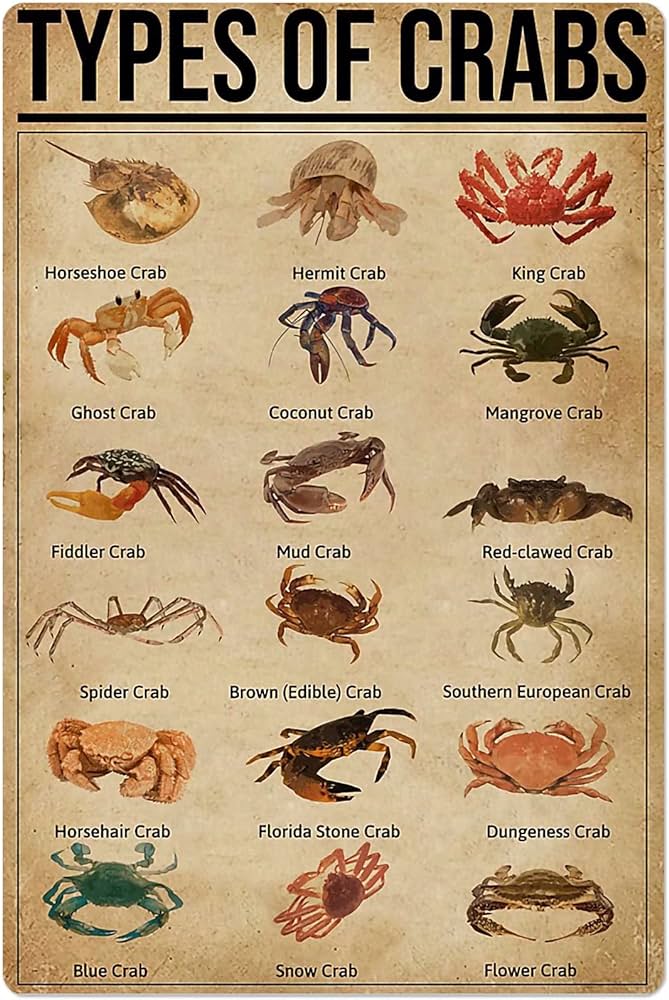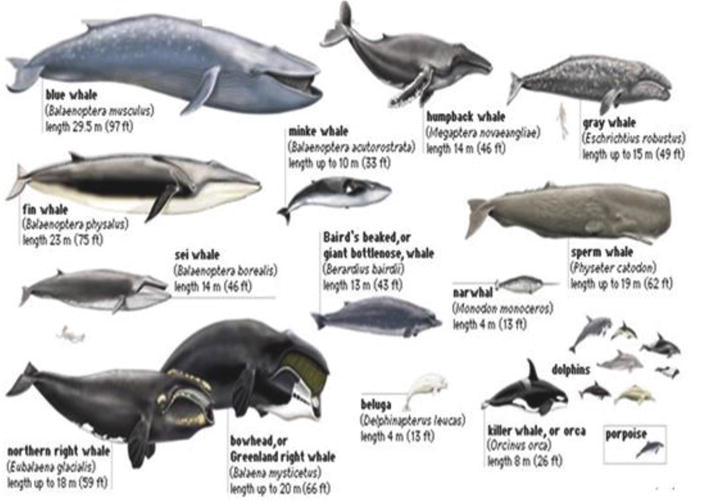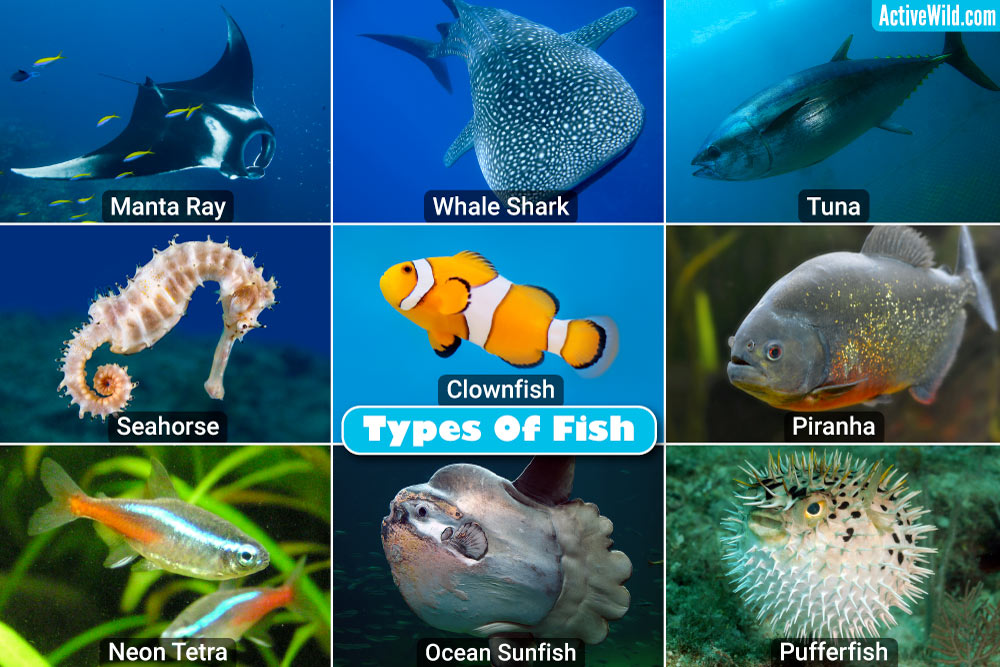Crab Species 101: A Fun Guide to Different Crabs!
Crab Species 101: A Fun Guide to Different Crabs!===
Crabs, with their unique anatomy and fascinating behaviors, have captured the curiosity of both scientists and beachcombers alike. In this fun guide, we will dive into the world of crab species and get to know some of the most interesting ones out there. From the mighty Blue Crab to the elusive Ghost Crab, each species has its own distinct characteristics that make them truly captivating. So, let’s grab our nets and head to the shores as we embark on a journey to explore the diverse world of crabs!
The Mighty Blue Crab
The Blue Crab, known for its vibrant blue color, is a common sight along the Atlantic coast. These feisty creatures are highly sought after for their succulent meat, making them popular in seafood dishes. Blue Crabs are excellent swimmers and can quickly scuttle sideways using their paddle-like rear legs. Their claws are not only powerful for catching prey but also for defense against predators. So, next time you spot a Blue Crab, be sure to admire its striking appearance and respect its formidable defenses!
The Curious Fiddler Crab
If you’ve ever walked along a sandy beach, you’ve probably noticed the peculiar burrows and intricate patterns on the sand surface. These are the work of the curious Fiddler Crabs. These small crab species are easily distinguishable by the males’ oversized claw, which they use for courtship displays and to communicate with other crabs. Fiddler Crabs are constantly on the move, digging, feeding, and engaging in social interactions. Their presence adds a touch of liveliness to the coastal ecosystems they call home.
The Colorful Sally Lightfoot Crab
Prepare to be mesmerized by the striking colors of the Sally Lightfoot Crab. Found mainly in the Galapagos Islands and along the Pacific coast, these crabs boast vibrant hues of red, orange, yellow, and blue. They are incredibly agile climbers and can effortlessly scale vertical rock surfaces. Sally Lightfoot Crabs are also known for their excellent ability to blend in with their surroundings, making them difficult to spot. Their dynamic presence adds a splash of color to the rocky shores they inhabit.
Meet the Adorable Hermit Crab
Hermit Crabs are nature’s architects, carrying their homes on their backs. These small crabs have soft abdomens that they protect by occupying abandoned shells of other mollusks. As they grow, they need to find larger shells to accommodate their increasing size. Although they appear antisocial, Hermit Crabs are actually quite social creatures and can be found forming large groups. Their curious behavior and endearing appearance make them a favorite among beachgoers.
The Majestic King Crab
Known for their massive size and impressive claws, King Crabs are a true marvel of the deep sea. These giants can span up to six feet in length, and their legs are armed with sharp spines for protection. King Crabs are primarily found in the cold waters of the Northern Pacific Ocean. Due to their delicious meat, they are highly valued in the seafood industry. So, if you’re ever lucky enough to encounter a King Crab, be sure to appreciate its majestic presence and keep a safe distance!
The Elusive Ghost Crab
As their name suggests, Ghost Crabs are masters of camouflage, blending seamlessly with the sandy beaches they inhabit. These nocturnal creatures are rarely seen during the day, preferring to emerge from their burrows under the cover of darkness. Ghost Crabs have large, stalked eyes that provide excellent vision, allowing them to detect prey and predators alike. Watching them scuttle across the sand is like witnessing a ghostly dance, adding an air of mystery to the coastal shores.
The Tiny Pea Crab
Size isn’t everything when it comes to crabs, as the Pea Crab proves. Measuring only a few millimeters in width, these tiny crabs often go unnoticed. They are masters of hiding and can be found living inside the shells of other marine animals, such as oysters or mussels. Pea Crabs have a fascinating symbiotic relationship with their hosts, benefiting from the protection they provide while cleaning up leftover food particles. It’s incredible how such a small creature can play an important role in marine ecosystems!
The Spiky Porcelain Crab
With their delicate appearance and exquisite patterns, Porcelain Crabs resemble fragile pieces of art. These small crustaceans inhabit rocky crevices along the ocean floor, where they use their long, spiky legs to filter plankton from the water. Porcelain Crabs have a unique defense mechanism – they can detach their limbs when threatened, regenerating them later on. This ability to regenerate makes them a true marvel of nature and a testament to the resilience of these spiky creatures.
The Fascinating Boxer Crab
Boxer Crabs, also known as Pom Pom Crabs, are famous for their unusual behavior. They wield small anemones in their claws, using them both as weapons and shields. By waving their anemones around, Boxer Crabs deter potential predators and fight off rivals. These fascinating crabs have a mutually beneficial relationship with the anemones, as they provide them with protection and the anemones benefit from their movements, gaining access to food. Don’t be fooled by their small size – Boxer Crabs are mighty warriors of the sea!
The Pint-Sized Sponge Crab
Sponge Crabs, as their name suggests, have a unique relationship with sea sponges. These small crabs carry living sponges on their backs, using them as both camouflage and protection. The sponge provides excellent camouflage, making the crab blend seamlessly into its surroundings. Sponge Crabs are highly selective about the type of sponge they use, ensuring it matches their habitat perfectly. This symbiotic relationship between the crab and the sponge is yet another example of the fascinating connections found in the underwater world.
The Stunning Moon Crab
Moon Crabs, with their vibrant colors and intricate patterns, are a true spectacle to behold. These medium-sized crabs are native to tropical regions and are often found in mangrove forests. Moon Crabs have a unique ability to change their colors, making them masters of camouflage. They are primarily herbivores, feeding on fallen leaves and fruits, but they also scavenge for small insects. With their striking appearance and captivating behaviors, Moon Crabs are a favorite among aquarium enthusiasts.
===OUTRO:===
Crabs may seem like simple creatures, but they possess a remarkable array of adaptations, behaviors, and appearances. From the might of the Blue Crab to the elusiveness of the Ghost Crab, each species has its own unique story to tell. So, next time you find yourself at the beach or exploring the depths of the ocean, take a moment to appreciate the diversity and wonder of these fascinating crustaceans. After all, the world of crabs is filled with surprises and is just waiting to be explored!



